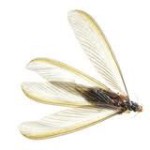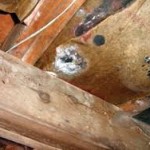What causes more structural damage each year to housing, mold or termite infestation?
 If you compared all insect infestation to mold structural damage you would find out that they actually work hand in hand to create damage around the home structure. They both thrive in moisture or high relative humidity environments. In fact molds actually break up the organic materials quicker which makes it easier for insects like carpenter ants and termites to do more damage. On the other hand, according to the New York Department of Health in order to reproduce, molds produce spores, which spread through air, water, or by insects. These spores act like seeds and can form new mold growth if the conditions are right.
If you compared all insect infestation to mold structural damage you would find out that they actually work hand in hand to create damage around the home structure. They both thrive in moisture or high relative humidity environments. In fact molds actually break up the organic materials quicker which makes it easier for insects like carpenter ants and termites to do more damage. On the other hand, according to the New York Department of Health in order to reproduce, molds produce spores, which spread through air, water, or by insects. These spores act like seeds and can form new mold growth if the conditions are right.
Sometimes wood that has been dry rotted or water damaged are actually damaged because molds such as Aspergillus and Cladosporium have infested the rotted areas. Yes the water initially started the process but as we all know when moisture comes in contact with wood or other organic building materials the conditions becomes ripe for mold growth.
Surface Mold Verses Wood Rot
Why aren’t trees damaged by mold and rot? Then answer to this question can help you understand something important about mold. As mold begins to grow, it feeds on the sugars, starches, and other compounds in wood. Living wood protects itself from this kind of mold and rot damage with its bark. Bark is absent of the sugars and starches that mold eats, discouraging mold growth. When wood is cut and processed, it loses this natural layer of protection and opens the door for mold and rot growth. Surface mold is able only to consume the sugars and starches in the wood, which does not influence the strength of the wood. Wood rot is able to consume sugars and starches as well, but it’s also able to convert the structural polymers in wood fibers to food, which weakens the wood’s strength.
According to the environmental protection agency molds gradually destroy whatever they grow on, so preventing mold growth also prevents damage to building materials and furnishings. If a mold and moisture problem goes unaddressed long enough, structural damage is likely to result. For example, if a roof is allowed to leak long enough, molds can weaken floors and walls by feeding on the wet wood.
The EPA also suggests that when mold is suspected of causing damage to the structural integrity of a building, a structural engineer or other professional with relevant expertise should be consulted.
Common moisture problems include:
• Leaking roofs.
• Leaking or condensing water pipes.
• Leaking fire-protection sprinkler systems.
• Gutters, and down spouts that direct water into or under a building.
• High humidity greater than 60 % relative humidity.
• Unvented combustion appliances such as clothes dryers
• Poor Landscaping grades towards the structure of the home.
Unseen moisture problems include:
• The inside of walls where pipes and wires are run are common sites of mold growth. Mold is frequently found on walls in cold corners behind furniture where condensation forms.
• Poorly draining condensate drain pains inside air handling units.
• Porous thermal or acoustic liners inside duct work.
• Roof materials above ceiling tiles.
• The back side of drywall paneling, and wallpaper.
• The underside of carpets and pads.
You may suspect mold, even if you can’t see it, if a building smells moldy. You may also suspect hidden mold if you know there has been a water problem in the building and its occupants are reporting health problems.
A mold expert should be consulted if you suspect hidden mold growth. Air sampling by a certified laboratory can in many cases show higher levels of mold spores in living areas.